Types and selection of feed grinder 2
Posted by Animall Feed Blok Making Machine | updatetime 2020-07-20 16:46
Types and selection of feed grinder 2
At the same time, the following aspects should be considered when purchasing:
(1) Selection according to crushed raw materials
For crushed grain feed, hammer-type crusher with top feed can be selected; for crushed bran wheat feed, claw crusher can be selected; if good versatility is required, crushed grain is the main. And take into account the cake and straw, you can choose a tangential feed hammer mill; for crushing mineral feed such as shells, you can choose a shell screenless mill; if it is used as the pre-treatment of the pre-mixed feed, the particle size of the product is required to be crushed if it is very fine and can be adjusted according to the needs, special non-sieve grinder should be selected.
(2) Choose according to production capacity
The instruction and nameplate of the general grinder contain the tated production capacity of the grinder (kg/h). However, several points should be noted: (1) The rated production capacity contain in it refers to the output under a specific state. For exaple, a grain feed grinder means that the crushed raw material is corn, its water content is storage safe water (about 13%), and the diameter of the screen aperture is 1.2mm. Because corn is a commonly used grain feed, the sieve with a diameter of 1.2mm is the smallest sieve commonly used. At this time, the production capacity is small, which takes into account the more common and difficult state of production. (2) The production capacity of the selected crusher should be slightly greater than the actual production capacity, otherwise it will increase the hammer wear, air leakage, etc., which will cause the production capacity to decrease and affect the continuous production and supply of feed.
(3) Choose according to supporting power
The machine manual and nameplate contain the power kilowatts of the electric motor of the crusher. It often indicates that it is not a fixed number but a certain range. For example, the 9FQ-20 type pulverizer has a supporting power of 7.5-11 kilowatts; the 9FQ-60 type pulverizer has a supporting power of 30-40 kilowatts. There are two reasons for this. One is that the power required for crushing different types of raw materials is quite different. For example, under the same working conditions, crushing sorghum is twice as powerful as crushing corn. Secondly when different screen holes are used, the load of the crusher has a great influence. Therefore, when the 9FQ-60 crusher uses a sieve with a diameter of 1.2mm the motor capacity should be 40 kilowatts; when changing to a sieve with a diameter of 2mm, a 30-kilowatt motor can be used, and a 2mm sieve sieve can be used. It is a 22 kw motor, otherwise it will cause a certain degree of waste.
(4) Choose according to the layout method
There are the ways to output the crushed products through the discharge device: self- weight blanking, negative pressure suctin and mechanical conveying. Small single machines mostly adopt self-weight blanking method to simplify the structure. Most of the medium-sized pulverizers are equipped with a negative pressure suction device. The advantage is that it can absorb the moisture of the finished product, reduce the humidiy in the finished product and facilitate storage, increase the crushing effciency by 10-15%, and reduce the dust in the crushing chanber.
(5) Choose according to dust and noise
The dust and noise in feed processing mainly come from the grinder. These two environmental sanitation indicators should be fully considered when selecting models. If you have to choose a grinder with high noise and dust, noise and dust prevention measures should be taken to improve the working environment and benefit the health of the operators.
(6) Choose according to energy saving
According to the regulations of relevant departments, the output of each kilowatt-hour of electricity shall not be less than 49kg when the hammer mill is used for crushing corn with a 1.2mm diameter sieve. At present, the output per kilowatt hour or domestic hammer mills has greatly exceeded the above-mentioned regulations, and the high-quality ones have reached 70-75 kg per kilowatt hour.
(1) Selection according to crushed raw materials
For crushed grain feed, hammer-type crusher with top feed can be selected; for crushed bran wheat feed, claw crusher can be selected; if good versatility is required, crushed grain is the main. And take into account the cake and straw, you can choose a tangential feed hammer mill; for crushing mineral feed such as shells, you can choose a shell screenless mill; if it is used as the pre-treatment of the pre-mixed feed, the particle size of the product is required to be crushed if it is very fine and can be adjusted according to the needs, special non-sieve grinder should be selected.
(2) Choose according to production capacity
The instruction and nameplate of the general grinder contain the tated production capacity of the grinder (kg/h). However, several points should be noted: (1) The rated production capacity contain in it refers to the output under a specific state. For exaple, a grain feed grinder means that the crushed raw material is corn, its water content is storage safe water (about 13%), and the diameter of the screen aperture is 1.2mm. Because corn is a commonly used grain feed, the sieve with a diameter of 1.2mm is the smallest sieve commonly used. At this time, the production capacity is small, which takes into account the more common and difficult state of production. (2) The production capacity of the selected crusher should be slightly greater than the actual production capacity, otherwise it will increase the hammer wear, air leakage, etc., which will cause the production capacity to decrease and affect the continuous production and supply of feed.
(3) Choose according to supporting power
The machine manual and nameplate contain the power kilowatts of the electric motor of the crusher. It often indicates that it is not a fixed number but a certain range. For example, the 9FQ-20 type pulverizer has a supporting power of 7.5-11 kilowatts; the 9FQ-60 type pulverizer has a supporting power of 30-40 kilowatts. There are two reasons for this. One is that the power required for crushing different types of raw materials is quite different. For example, under the same working conditions, crushing sorghum is twice as powerful as crushing corn. Secondly when different screen holes are used, the load of the crusher has a great influence. Therefore, when the 9FQ-60 crusher uses a sieve with a diameter of 1.2mm the motor capacity should be 40 kilowatts; when changing to a sieve with a diameter of 2mm, a 30-kilowatt motor can be used, and a 2mm sieve sieve can be used. It is a 22 kw motor, otherwise it will cause a certain degree of waste.
(4) Choose according to the layout method
There are the ways to output the crushed products through the discharge device: self- weight blanking, negative pressure suctin and mechanical conveying. Small single machines mostly adopt self-weight blanking method to simplify the structure. Most of the medium-sized pulverizers are equipped with a negative pressure suction device. The advantage is that it can absorb the moisture of the finished product, reduce the humidiy in the finished product and facilitate storage, increase the crushing effciency by 10-15%, and reduce the dust in the crushing chanber.
(5) Choose according to dust and noise
The dust and noise in feed processing mainly come from the grinder. These two environmental sanitation indicators should be fully considered when selecting models. If you have to choose a grinder with high noise and dust, noise and dust prevention measures should be taken to improve the working environment and benefit the health of the operators.
(6) Choose according to energy saving
According to the regulations of relevant departments, the output of each kilowatt-hour of electricity shall not be less than 49kg when the hammer mill is used for crushing corn with a 1.2mm diameter sieve. At present, the output per kilowatt hour or domestic hammer mills has greatly exceeded the above-mentioned regulations, and the high-quality ones have reached 70-75 kg per kilowatt hour.
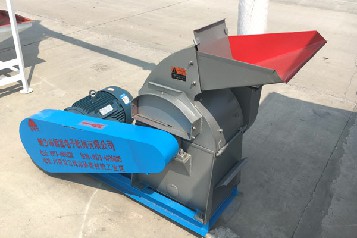
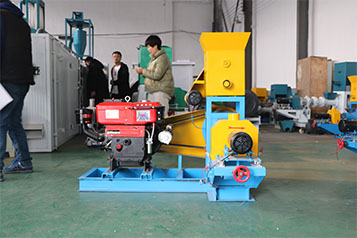
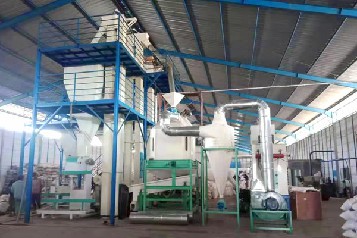
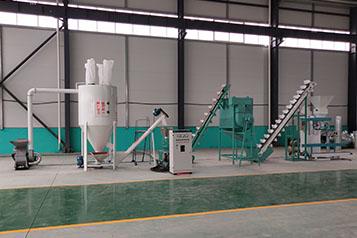
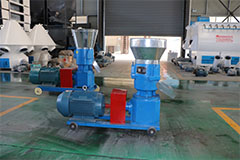


Leave your comment Here